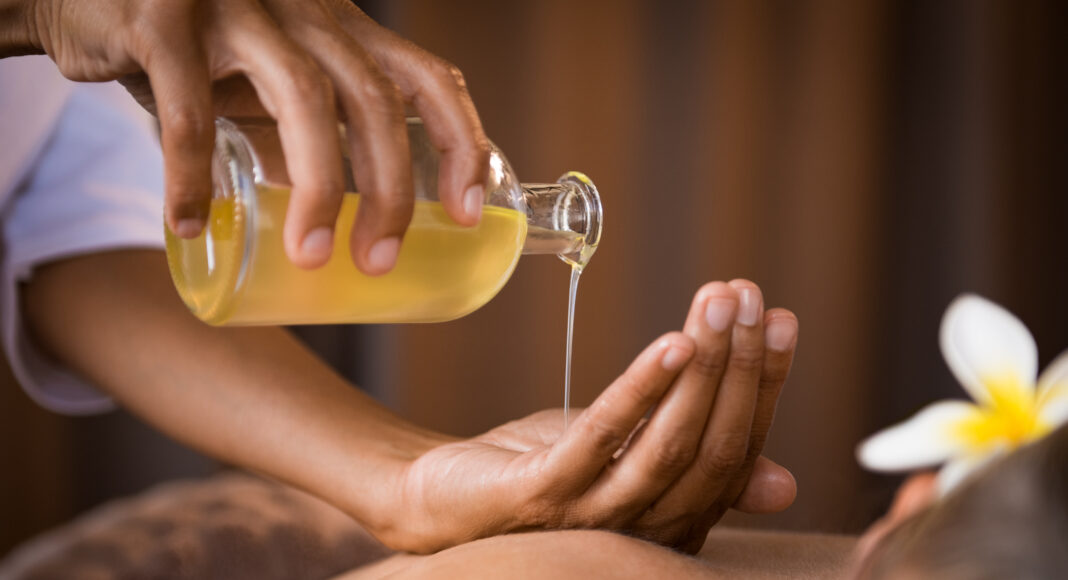How the alternative medicine gets to the core problem
Last Wednesday, editor in chief Brad Kava asked me, the news editor, for a health and fitness story.
I thought, how can I use this to my advantage?
So I was determined to make the most of my chance to write something fun on the company dime. As I cycled through ideas and scrolled the web, I found it: a massage offering listed on the Ayurvedic Healing website.
Ayurveda, I came to discover, is an ancient Indian medical system and one of the world’s oldest medical systems. It’s a holistic approach to physical and mental health that promises to address the root causes of sicknesses and boasts a preventative approach.
One day later, I was standing outside a nondescript building on the side of Soquel Drive, prepared to get a massage on the clock. On the phone, the receptionist who scheduled my ashwagandha massage said to wear clothes that could get oil on them—I didn’t give this much thought. I’ve had massages before, I knew the drill, the well-lotioned aftermath.
But as I lay on the massage bed and my masseuse, Kerri Lanzarotto, poured what felt like cups of warm oil on my face and hair, I internally swore about my choice to wear my brand new Lululemon yoga pants. Lanzarotto massaged the cups of oil into my hair, while I also lamented my decision to interview the doctor at the practice, Dr. Manas S. Kshirsagar, after my treatment.
I tried not to bother with these thoughts as I lay face down with oil slipping down my body and willed myself to relax. Lanzarotto rubbed my arms in circular motions, with the intention of clearing out the toxins from my lymphatic system.
“We use a series of strokes and circles to promote lymphatic drainage, and the oil acts as a lubrication to break down the toxins to kind of loosen them up,” Lanzarotto said. “When our digestive system isn’t functioning properly, if we’re not completely digesting the food we take, our body starts storing these toxins when we’re unable to eliminate them properly. [With this type of massage] they can detach and move into the lymphatic system.”
Lanzarotto is a registered nurse with a bachelor’s degree in science. She practiced western medicine for some years before being drawn to Ayurveda. She believes in the philosophy of Ayurveda, which seeks to cure the core issues of an illness or disease and prioritizes preventative methods, over that of Western medicine, which follows the principles of prescribing an antidote to minimize it.
That methodology is also what Dr. Manas S. Kshirsagar found compelling about Ayurveda. Kshirsagar and his parents own the Ayurvedic Healing practice. His parents have been practicing Ayurveda medicine since he was a child.
As a young boy and throughout his early adulthood, Kshirsagar was determined to be a doctor—“but not a hippy doctor, like my parents,” he said.
It was during his residency that this began to shift.
“In an ethics class that they told us students, ‘you should never get too close or too personal with your patients,’” Krshirsagar said. “You should always keep them at a distance. Growing up, that was not at all what I witnessed from my parents with their patients.”
When Kshirsagar and his parents do intakes for new patients, they ask a series of in-depth questions: everything from a client’s close relationships, to their levels of stress and anxiety, to the direction their house faces.
Kshirsagar said this gives the doctors an overall picture of what’s happening in a client’s life, so as to identify areas where an imbalance might be. These sort of detail-oriented intakes also help eliminate the gender and race bias that exists in Western medicine: studies have repeatedly found that doctors minimize women’s pain and are much more likely to link it to an emotional or a psychological cause, rather than a bodily or biological one. Doctors’ minimization of pain is amplified for marginalized people.
“That sort of stigma that’s associated with just the question-answer process is non-existent in Ayurveda,” Dr. Kshirsagar said. “We sit here for an hour, sometimes more during the initial consultation, going over every aspect of your life.”
That’s the edge Ayurveda claims over Western medicine. At least, it’s what I found most appealing. According to Kshirsagar, Ayurveda doctors are curious about how to cure whatever it is that ails clients, rather than simply diagnose it. Ayurveda’s approach also seems intuitive: to do that, it’s important to examine every aspect of life, not just the symptoms of whatever ails you.
“Everybody has stress. Everybody has issues—physical, mental, emotional,” Kshirsagar said. “But how you deal with those is what Ayurveda is all about. And so we give you many different tools, whether it be self-love, massage, herbs, exercise, meditation, prayer, all of these are different modalities that Ayurveda uses to help alleviate somebody’s imbalance.”
As I left the practice, I sat in my car for a moment, trying to determine if I felt fewer toxins in my body after my massage. As I examined my arms and legs, not sure what I was looking for, I caught a glimpse of myself in the rearview mirror. My face was shiny and my hair, plastered against my head, looked wet from the oil. I couldn’t help but laugh, and drove off feeling a bit lighter.
To visit Ayurveda Healing, go to www.ayurvedichealing.net or visit in-person at: 541 Soquel Avenue, Santa Cruz
take out for space













